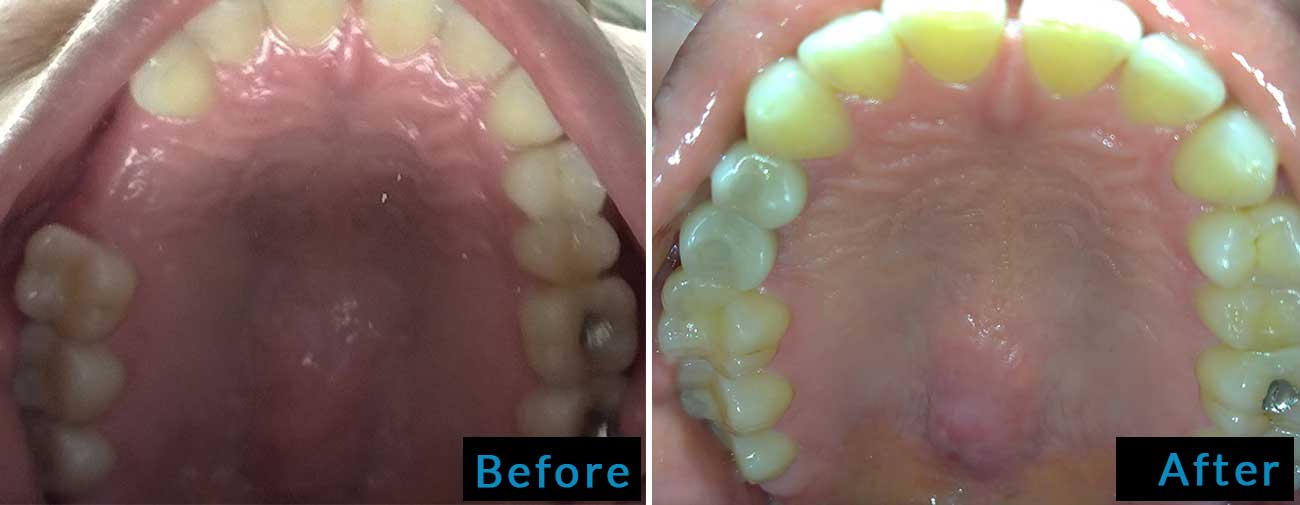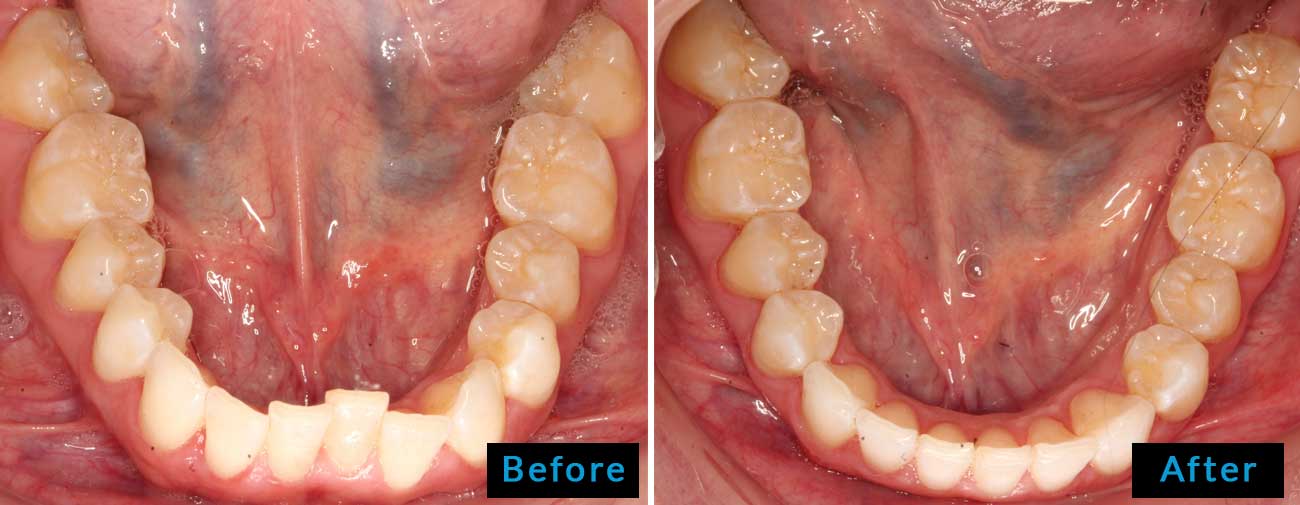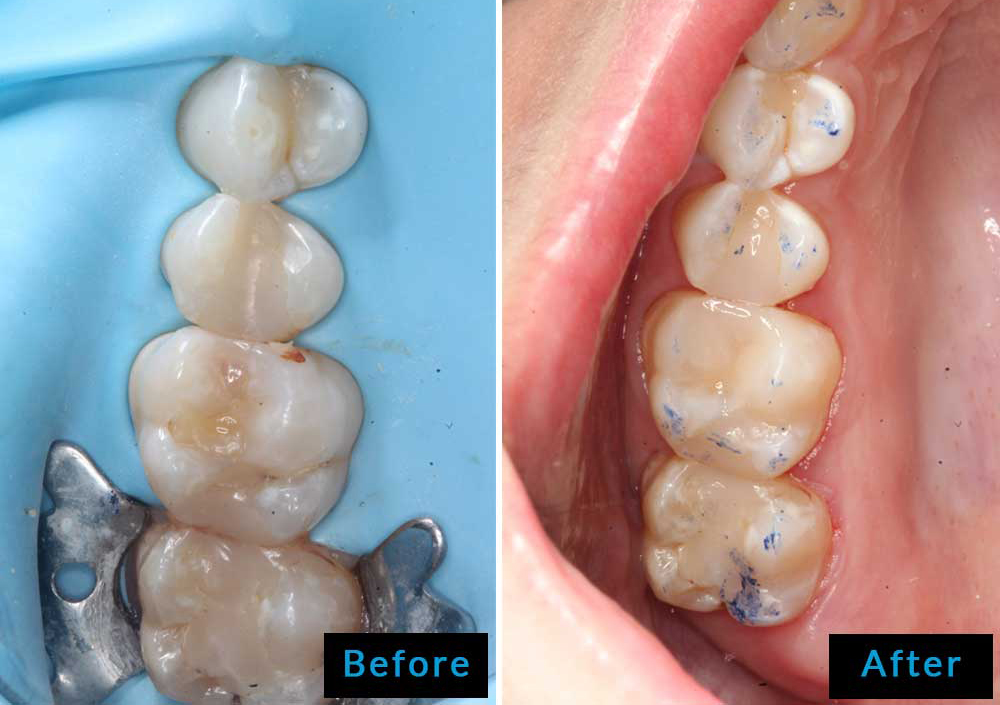Dental Implant

Left mandibular (lower), the first molar, has been extracted. A bridge was not a viable option, and removable partial denture was not desired by the patient. The tooth was replaced by a titanium implant and crown.

Right maxillary (upper) first and second premolars have been extracted, which were replaced by titanium implants and crowns side-by-side, as per the patient’s request.
Invisalign

The patient did not like the crowded appearance of both the upper and lower front teeth. They were corrected by a series of Invisalign trays.

The patient did not like the crowded appearance of both the upper and lower front teeth. They were corrected by a series of Invisalign trays.
Teeth Restoration

The right mandibular (lower) first molar with an old and failing amalgam (gray metal) restoration, which was replaced by composite (white) restoration under rubber dam isolation.

The right maxillary (upper) first molar with an old, deteriorating composite (white) restoration. The tooth was restored by a new composite (white) after the removal of the old filling and cavity around it.

Top View:
The right maxillary (upper) first molar was restored by amalgam (gray metal) many years ago, which had weakened the tooth structure, and created a crack that ultimately led to a fracture of the cheek half of the tooth entirely. Fortunately, in this case, the crack did not extend deep below the gumline or to bone level, so it could be restored by a direct composite (white) filling.

Side View:
The right maxillary (upper) first molar was restored by amalgam (gray metal) many years ago, which had weakened the tooth structure, and created a crack that ultimately led to a fracture of the cheek half of the tooth entirely. Fortunately, in this case, the crack did not extend deep below the gumline or to bone level, so it could be restored by a direct composite (white) filling.

The right mandibular (lower) first molar was restored by amalgam (gray metal) many years ago that showed signs of deterioration, a broken margin that led to the formation of recurrent caries around it. It was removed and replaced by composite (white) restoration.

The right maxillary second premolar (#1.5) and first molar (#1.6) were grossly decayed. The teeth were restored under rubber dam isolation by a composite (white) filling after careful removal of the deep cavity.
Zoom Whitening

Chairside bleaching done by Philips Zoom in less than 1 hour. The “After” image exhibits the shade difference between before and after with the shade of the before procedure adjacent to the tooth after the procedure.

The patient is not satisfied with the internal stain of the teeth. In some instances, these types of stains are resilient and require several sitting and, in some instances, require masking by veneer. However, after less than 1 hour of bleaching by Philips Zoom, the patient was satisfied with their newly-achieved shade and did not wish to proceed any further.

Even though the natural shade of the teeth is pretty white, the patient wished to improve their teeth’ shade by using chairside Philips Zoom bleaching, the teeth’ appearance improved by three shades in less than an hour.

By utilization of chairside Philips Zoom, the patient noticed an improvement of 3 shades in their teeth within about 45 minutes.

Despite having very white teeth, the patient requested further improving their teeth shade, which was achieved by Philips Zoom whitening procedure in less than 45 minutes.

Following 1 hour of chairside bleaching by Philips Zoom, the patient observed shade differences of 7-8 levels.



